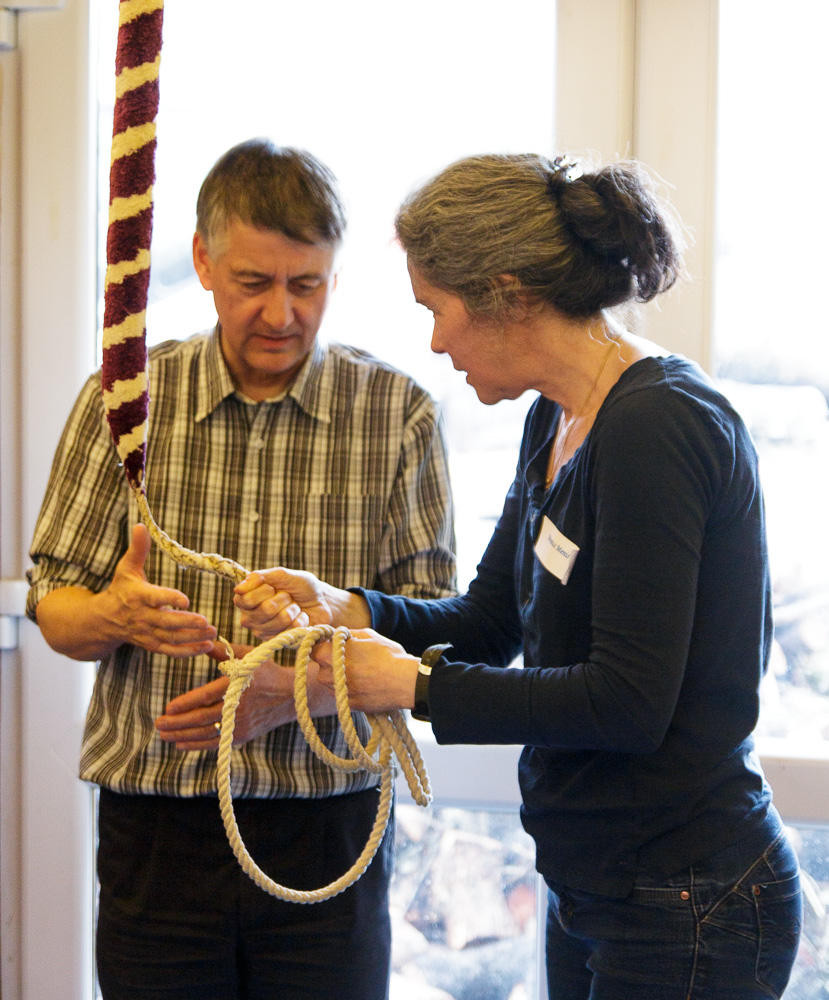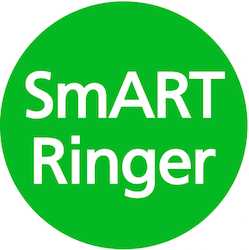As a relatively novice bellringer with imperfect handling, I didn’t expect to ever have to teach bellhandling to beginners–I have enough trouble minding my own bell– but as part of both the Scottish and the Newcastle and Durham associations, neither area exactly awash with towers or teeming with ringers, I am suddenly in the position of needing to help various towers bring learners up to speed as quickly and safely as possible.
So when I found out that Judith Frye was leading a group to train ringers in how to teach bellhandling, using ART module 1, I jumped at the chance.
It was a roaring success for me, and clearly a productive and enjoyable weekend for the twelve other participants.

Working in pairs
Obviously, a great deal of credit goes to the actual composition of the course. Taking a complex physical process like bellringing, and de-constructing it into bite-sized chunks, which can then be taken into a tower and practised , separately and in a sequence, until they become automatic, is clearly a sensible and well-tested approach to learning and teaching, and I am grateful that ART has take the time and trouble to formalize this process, in such a user-friendly way and with such good support materials and follow-through mentoring.

Explaining how to make coils
However, what made my training days fantastic (at least for me) rather than simply good, probably comes down to the following:
- a) The quality of the course instructors:
We were extremely fortunate to have Judith Frye as our tutor and her son Jonathan who organised the course. This super-duo, aside from being excellent ringers, are also excellent communicators, who managed to present the activities articulately and concisely, and demonstrate them clearly. The pair worked very well as a team, injecting not only professionalism but also humour into all their presentations. And just when you thought it couldn’t get any better–their home baking was delicious!
- b) The composition of the students:
I was one of six other relatively new ringers in the course, with the other seven being extremely experienced ringers with decades of teaching experience behind them, so that all of the pairs in the practical work included one of them, thus reducing any sense of panic or clumsiness greatly. Although the novices certainly provided feedback and input–we remember clearly what it’s like not to know how to handle a bell–the input of the more experienced ringers was very useful. The atmosphere was respectful and supportive, with lots of humour and enthusiasm.
- c) The venue:
Scotland has very few ringing towers, but amazingly, we have a state-of-the-art, purpose-built ringing centre, with a light peal of twelve. This enabled all the students, who paired up for the practical sessions, to have one up and one down bell so that all of the exercises could be done seamlessly back to back without having to raise/lower bells, and even if this became necessary, it was possible to do so very quickly without having all the students exhausted at the end of the day (we were exhausted anyway).
This clean and modern tower with a well-lit ringing room and perfectly lined up new bells and ropes, not only has a peal of 12; there is also a light peal of 8 and a dumbbell attached to a simulator with a large screen for solo ringing. When I tell you it is set in the middle of fantastic scenery and only a few miles from a pub with real ales and a log fire, –well, it’s just about a dream venue for a teaching weekend.
Looking forward to Module 2 already!

